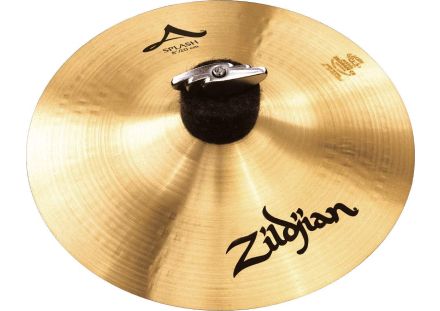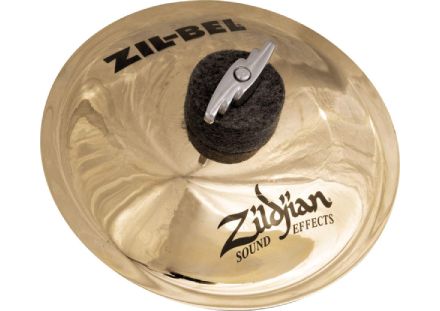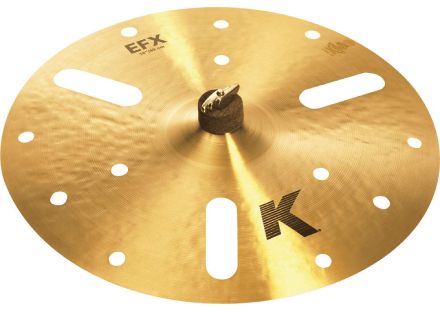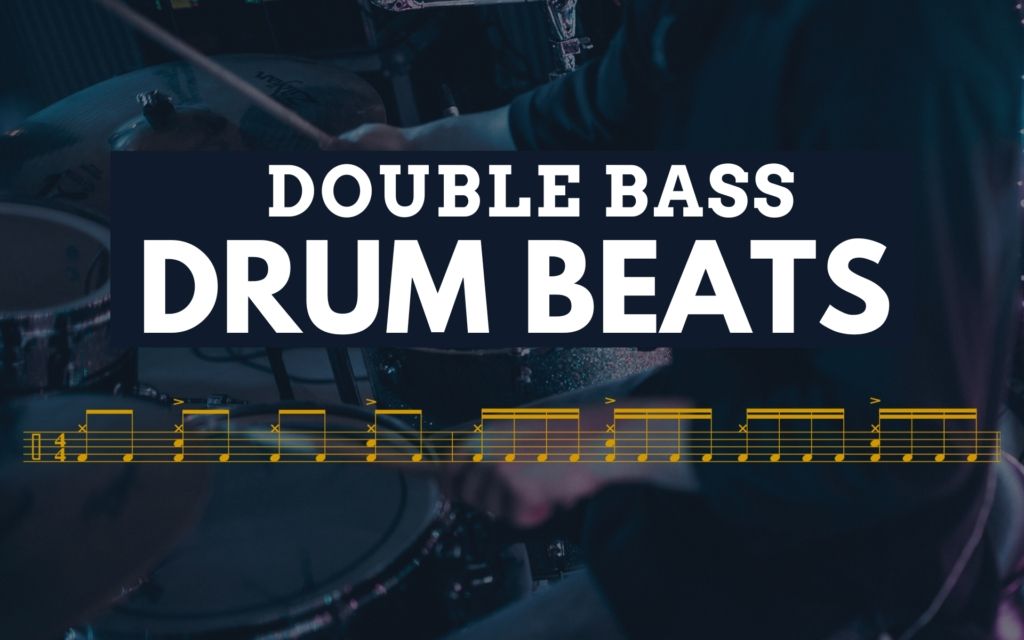Unless you’re an experienced drummer or you work in a music store, you might not be too familiar with the different types of cymbals out there. That’s why I’ve written this complete beginner’s guide – to help you identify different cymbal types and help you make an informed decision when looking to add new sounds to your drum set!
Without further ado; here is my in-depth guide to all the different types of cymbals available.
Contents
What Are Cymbals?
Let’s start with the basics. A cymbal is an alloy metal disc that is designed to create a sound when it’s struck. All of your favorite drummers play bronze cymbals.
Cymbals can come in all different sizes. The smallest cymbals such as bell cymbals and splash cymbals can be as small as 6” in diameter, ranging to china cymbals and ride cymbals as large as 30”.
A quick point I’ll add here is that heavier cymbals are louder – The weight and size of a cymbal directly impact the volume, sound, and power. But the trade-off is that the playing response is much slower. A small splash cymbal will explode much quicker in sound compared to a large crash cymbal because vibrations are able to travel through the metal faster.
A typical drum set will nearly always feature the three most common types of cymbals: a pair of hi hats, a crash cymbal, and a ride cymbal. This is the basic cymbal pack that will allow you to play most styles of music effectively. Let’s now take a look at all the different types of cymbals you might come across.
Types of Cymbals
Hi Hat Cymbals

The hi hat cymbals are arguably your most important cymbals because they help lay down the foundation of your groove! The hi hat cymbals help keep you in time as well as other musicians. They are typically used to play steady rhythmic patterns along with the kick and snare drum.
Hi hat cymbals come in a pair of two; with a bottom hi hat and a top hi hat. The bottom hi hat is generally heavier than the top hi hat. This helps to create the classic percussive ‘chick’ sound whilst played. The most popular hi hat size is 14” but they can also range between 12 and 15 inches.
Hi hat cymbals are mounted onto a hi hat stand, with the top hi hat being affixed onto the hi hat rod with a hi hat clutch. They can be played in a range of ways, from being played tightly closed to wide open or anything in between. Loose hi hats create a much louder and aggressive ‘sloshy’ metallic sound.
Crash Cymbals

If someone was asked to think about what type of noise a cymbal makes, it’s bound to be a crash cymbal! It’s a stand-alone cymbal that produces a loud and explosive sound used to punctuate parts of a rhythm or song.
Crash cymbals are most often played at the end of a drum fill, to help signify a musical transition whilst adding some excitement and variety. The sound of a crash cymbal is loud, washy, and explosive in order to cut through the music!
Crash cymbals typically range from 14” in diameter to 22” inches. Crash cymbals also drastically vary in weight and thickness, altering the sound altogether. The most common crash cymbal sizes are 16” and 18” in diameter. In my opinion, the crash cymbal is the most fun type of cymbal to play.
Ride Cymbals

The sound of a ride cymbal is famously heard within a jazz drum set, and they are a staple component within any conventional drum set.
Ride cymbals look fairly similar to crash cymbals, but they are larger; ranging from 20” upwards. They also typically have a larger bell – adding harmonics and presence to the sound.
A ride cymbal is also played differently from a crash cymbal. A crash cymbal is most often struck on the edge with the shoulder of the drumstick, whilst a ride cymbal is played on the top surface (the bow) or the bell with the tip of the drumstick.
A ride cymbal sound is most often a clean and articulate ‘ping’ sound that has a defined note and a short sustain, in comparison to the long sustain and washy explosive sound of a crash cymbal.
Splash Cymbals

Splash cymbals are popular and fun types of cymbals to play – they are essentially tiny crash cymbals and they are much smaller and thinner. Splash cymbals vary between 6” and 12” typically in size.
Because of their compact size, they are easy to place within an existing drum set configuration, and there is lots of flexibility with where to mount them.
Splash cymbals produce a very fast and sharp sound that is used for playing punchy accents. They have a short decay and a fast activation time, meaning they produce a quick ‘splash’ sound.
China Cymbals

China cymbals are the other most popular type of effects cymbal found within drum sets. China cymbals are loud, large, and very trashy sounding. But in a good way!
They are typically large in size, ranging between 16” and 24” inches in size. But you can also find mini china cymbals that are 12” or 14” too. The design features a distinctive upturned bow similar to Chinese gongs – hence their name.
China cymbals are explosive and loud and are played in a similar way to crash cymbals for a strong, single accent. The sound of a china cymbal is very easy to identify with its huge and trashy tone.
Bell Cymbals

Bell cymbals are small, thick and heavy bells with little or no taper. They produce a unique, high-pitched and loud tone with a long sustain. They are often mounted on top of another cymbal within a drum set.
Effects Cymbals

Perforated cymbals are one of the newer types of cymbals played in the drumming world. Effects cymbals are designed to deliver sharp and trashy sounds, and they also have a shorter decay time. Cutting metal out of the cymbal distorts the sound waves and thus creates an aggressive-sounding roar.
Nearly all the cymbal brands have been experimenting with cutting holes out of cymbals in the manufacturing process. Now there are hi hats, crash cymbals, splash cymbals, chinas, cymbal stacks, and other types of cymbals that feature holes within them.
How Are Cymbals Made?
Now I have explained each of the different types of cymbals you are likely to encounter on a drum set, let’s take a look at the different alloy compositions cymbals are made from and how they are crafted.
Cymbals can be divided into two categories: cast cymbals and sheet cymbals.
Sheet Cymbals (Affordable)
Sheet cymbals are the least expensive type of cymbals. They are stamped out of a large piece of existing sheet metal, which is much easier and cheaper to manufacture when compared to cast cymbals. If you are a beginner looking for affordable cymbals, you can expect them to be sheet cymbals.
These cymbals make up entry-level lines such as Zildjian ZBT and Meinl HCS budget line of cymbals. The alloy composition of sheet cymbals is either brass or B8 bronze. Sheet cymbals are practical and affordable tools that allow novice drummers to develop their playing.
Cast Cymbals (Professional)
All the professional-level cymbals you will see famous drummers using are cast cymbals. A cast cymbal begins its life as molten bronze that is poured into a mold. This cast metal disc will endure rolling, pressing, hammering, and lathing to become a beautiful finished product.
The cast cymbal manufacturing process is labor-intensive and expensive. The cymbal craftsmen that guide the process often have decades of experience ensuring each handmade cymbal is perfectly fit for purpose. Hand hammering and cymbal lathing are specific art forms in themselves.
Cast cymbals are crafted from a B20 bronze alloy; a formula of 80% copper and 20% tin. This is traditionally regarded as the best cymbal alloy leading to a sonically richer-sounding cymbal. The Zildjian A and K lines of cymbals and Sabian’s AAX/HHX ranges are some of the most well-known types of cymbals crafted with B20 bronze.
Types of Cymbal Finishes
You will be able to tell by the aesthetics of cymbals that they will boast one of two different types of finishes. These are either brilliant finish cymbals or traditional finish cymbals. These finishes alter the overall cymbal sonics, producing brighter or darker sounds. It’s important to note that neither is strictly better than the other, it’s all down to personal preference!
Brilliant Finish Cymbals

Brilliant finish cymbals feature a distinctive mirror-shine finish that provides them with brighter sounds. They have a relatively high pitch and they produce loud and cutting sounds. Brilliant finish cymbals are excellent for rock, pop and other styles of music that require cymbals to cut through a wall of sound.
Traditional Finish Cymbals

Traditional finish cymbals feature a raw unlathed surface that has a raw appearance, unlike its brilliant finish counterpart. Traditional finish cymbals have a darker and mellower sound overall compared to brilliant finish cymbals. You are most likely to find traditional finish cymbals being played within jazz, blues, and funk music.
Summary
So there we have it! I’ve covered all of the different types of cymbals available that you can expect to find within your favorite drummer’s cymbal setup. I’ve also explained the difference between beginner cymbals and professional-level cymbals, and the interesting ways in which different types of cymbals are made.
I hope this guide has been informative and helped you to understand more about the different cymbal types available and how they are used within the modern drum set!
If you’ve bought some cymbals, or you’d like to learn more about how cymbals are positioned within a drum set, I’ve written a cymbal placement guide which you may find helpful too.









